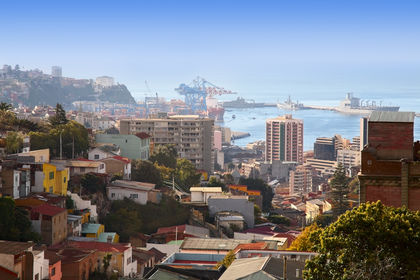Chile - Industry

Chile ranks among the most highly industrialized Latin American countries. Since the 1940s, manufacturing has contributed a larger share of GDP than has agriculture. About one-third of the value added by manufacturing comes from the production of food, beverages, and tobacco products. During the last decade of the nineteenth century, food product exports soared, with growth of 85% up to 1,000%.
The basic industrial pattern, established in 1914, included food processing, beverage production, sugar refining, cotton and woolen mills, a hosiery mill, a match factory, an iron foundry, and a cement factory. During the next decade, industrial production rose about 85%, but from 1949 to 1958 the level of output was virtually stationary. With the establishment of the Huachipato steel mill in 1950, the groundwork was laid for the development of heavy industry. Chile's first copper refinery was inaugurated in November 1966. The major industrial region is the Santiago-Valparaíso area. Concepción is in the center of an industrial complex. The state-owned firm CODELCO is the world's second-largest copper mining company, but the private sector generally produces more copper than the state (two-thirds of the total).
During 1970–73, 464 domestic and foreign-owned plants and facilities were nationalized by the Allende government. These included the copper installations of the Anaconda and Kennecott corporations and other companies owned by US interests. By 1982, the military government had returned most expropriated installations to their original owners. The free-market policies of the junta, together with a worldwide recession, resulted in a 25.5% drop in manufacturing output in 1975. After the mid-1970s, Chilean industry moved away from concentration on import substitution to become more export-oriented. Over 20% of the 1985 value of industrial production came from exports, and in 1998, the value of exports exceeded the value of imports for the first time. Key sectors include textiles, automobiles, chemicals, rubber products, steel, cement, and consumer goods.
The industrial sector grew at an average rate of 7% between 1976 and 1982. Industrial output grew by an average of 3.7% per year between 1980 and 1990, and by 6.6% annually during 1988–98. Manufacturing output grew on average by 3.4% annually during the 1980s, and by 5.8% per year between 1988 and 1998.
Chile has three oil refineries, with a production capacity of 205,000 barrels per day. It has a fledgling automobile industry: in 2001, Chile produced 10,519 units, up from 5,245 in 2000. It also produces some heavy trucks.